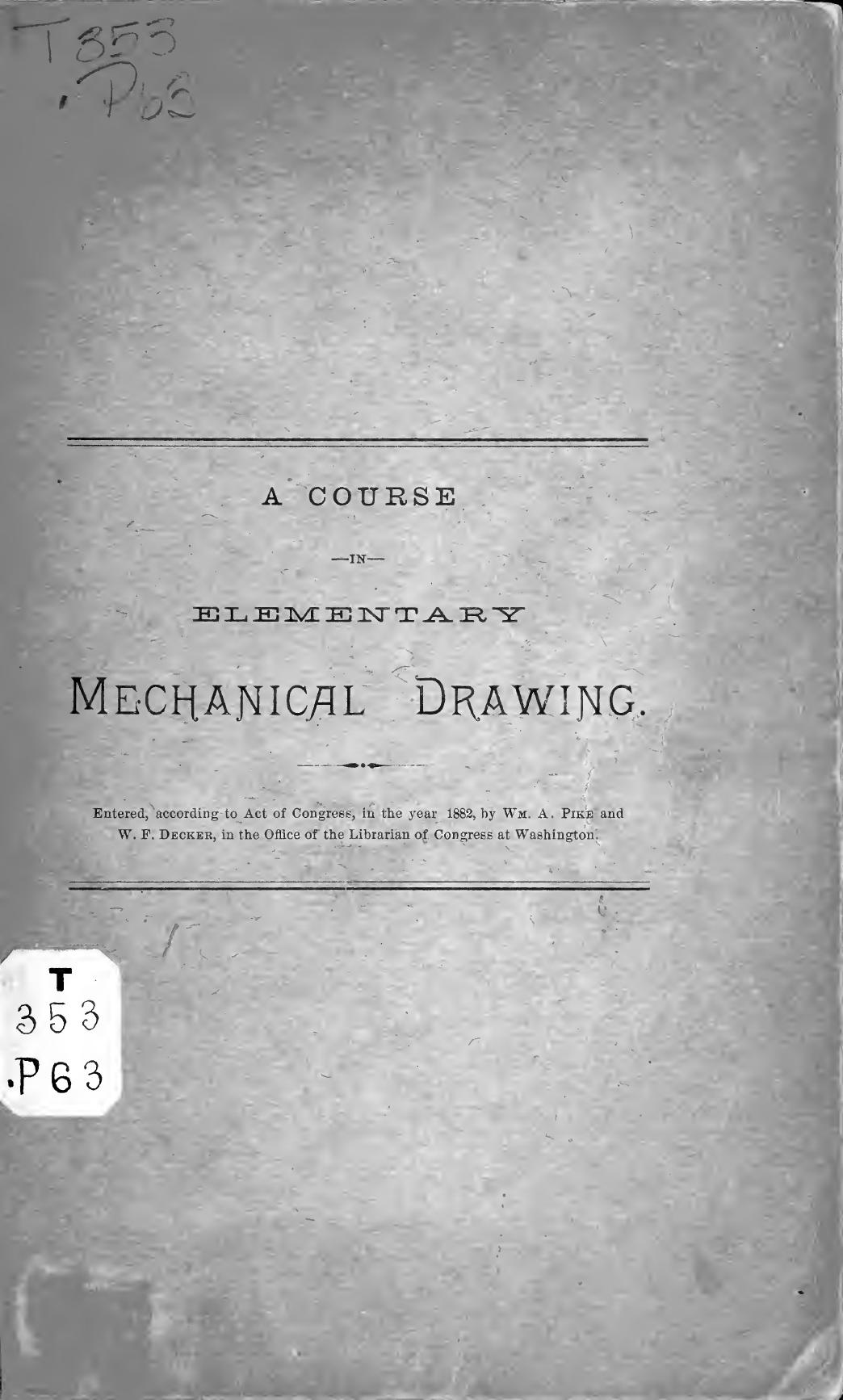A course in elementary mechanical drawing by Pike William A

Author:Pike, William A. [from old catalog]
Language: eng
Format: epub, pdf
Tags: Mechanical drawing
Publisher: Minneapolis, L. Kimball & co., printers
Published: 1882-03-25T05:00:00+00:00
Proh. 5. To revolve the prism of Prob. 4, through a given angle, about the lower right-hand corner, so that the vertical edges shall revolve in planes parallel to the vertical plane of projection.
In this problem, as in Prob. 2, the revolution will be such that the vertical projection will be changed only in position. La}' off, then, E F, making with G L the given angle of revolution, and draw the elevation of Problem 4 on E F as a base. Draw the plan, as in Problem 2, by erecting perpendiculars from each point in the elevation, and by drawing indefinite lines from corresponding points in the plan of Problem 4. The intersection found in this way will be the points in the plan. The revolution being the same as in Problem 2, the reasons given there apply to this case as well.
Prob. 6. To revolve the prism of Problem 5 through a given horizontal angle about E.
Draw the plan of Problem 5, inclined to G L, at the given angle of revolution locating the plan of the point E, on the same horizontal line as it is in Problem 5. Gret each point on the elevation, in the same way that the points in Problem 3 are found, by finding the intersections of perpendiculars and horizontals, drawn respectively from the plan, and from the elevation of Problem 5, remembering that the points revolve horizontally, and do not change vertically.
The projections of the point A in Problems 4, 5 and 6, are indicated by the dotted lines on the cuts. The other points in Problem 6 are found in precisely the same way.
Proh. 7. To construct the projections of a regular hexagonal pyramid, and the projections of a section of that pyramid made by a plane which is perpendicular to the vertical plane.
The height of the jDyramid is to be the same as that of the prism in Problem 1, and the diameter of the circumscribing circle of the base is to be two inches.
The part of the pyramid above the section is to be represented by dotted lines and the lower part, or frustum, in full lines.
To find the projections of the pyramid, draw a regular hexagon, A B C D E F, above Gr L, with lines joining the opposite vertices for the plan of the pyramid; draw perpendiculars from the vertices to G L. The intersections of these perpendiculars with G L will be the elevations of the corners of the base. Erect a perpendicular from the center of the elevation
Download
A course in elementary mechanical drawing by Pike William A.pdf
This site does not store any files on its server. We only index and link to content provided by other sites. Please contact the content providers to delete copyright contents if any and email us, we'll remove relevant links or contents immediately.
The Vikings: Conquering England, France, and Ireland by Wernick Robert(79842)
Ali Pasha, Lion of Ioannina by Eugenia Russell & Eugenia Russell(40100)
The Conquerors (The Winning of America Series Book 3) by Eckert Allan W(36959)
The Vikings: Discoverers of a New World by Wernick Robert(36903)
Cecilia; Or, Memoirs of an Heiress — Volume 1 by Fanny Burney(32395)
Cecilia; Or, Memoirs of an Heiress — Volume 3 by Fanny Burney(31771)
Cecilia; Or, Memoirs of an Heiress — Volume 2 by Fanny Burney(31740)
Empire of the Sikhs by Patwant Singh(22920)
The Secret History by Donna Tartt(18785)
Hans Sturm: A Soldier's Odyssey on the Eastern Front by Gordon Williamson(18447)
Cat's cradle by Kurt Vonnegut(15125)
Pimp by Iceberg Slim(14250)
Sapiens: A Brief History of Humankind by Yuval Noah Harari(14180)
Talking to Strangers by Malcolm Gladwell(13155)
Norse Mythology by Gaiman Neil(13154)
Leonardo da Vinci by Walter Isaacson(13124)
4 3 2 1: A Novel by Paul Auster(12244)
Underground: A Human History of the Worlds Beneath Our Feet by Will Hunt(11992)
The Radium Girls by Kate Moore(11885)
